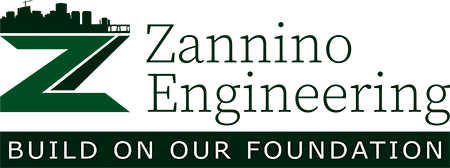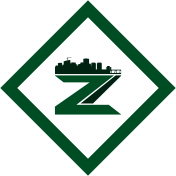Engineering
Subsurface Investigations
 The mysteries below the ground can be the best friend or the worst enemy of your proposed development. Carefully examining and testing soil below your project should be left in hands of experienced professional engineers and exploration professionals who are familiar with the geologic conditions of their practice area. This data collection can take many forms depending on the complexity of the site and structures it needs to support. Traditional hollow stem auger borings and Standard Penetration Testing are still the standard of the industry for the collection of soil, rock and groundwater. The experienced drill crew is accompanied by a staff engineer, geologist or certified scientist who reports the findings to the project geotechnical engineer. Some studies may require electronic data collection such as cone penetrometer, dilatometer and pressuremeter testing. These in-situ tests can greatly reduce the cost of a foundation system for a heavily loaded structure on less than perfect soil. The analysis performed in the office is only as good as the data collected in the field during the investigation.
The mysteries below the ground can be the best friend or the worst enemy of your proposed development. Carefully examining and testing soil below your project should be left in hands of experienced professional engineers and exploration professionals who are familiar with the geologic conditions of their practice area. This data collection can take many forms depending on the complexity of the site and structures it needs to support. Traditional hollow stem auger borings and Standard Penetration Testing are still the standard of the industry for the collection of soil, rock and groundwater. The experienced drill crew is accompanied by a staff engineer, geologist or certified scientist who reports the findings to the project geotechnical engineer. Some studies may require electronic data collection such as cone penetrometer, dilatometer and pressuremeter testing. These in-situ tests can greatly reduce the cost of a foundation system for a heavily loaded structure on less than perfect soil. The analysis performed in the office is only as good as the data collected in the field during the investigation.
Foundation & Design Recommendations
 All data collected during the subsurface investigations is carefully reviewed by the project engineer who assigns laboratory tests on the recovered samples to assist in the evaluation of foundation support and site development. Laboratory test results coupled with field data become the basis of soil parameters that are developed to calculate and predict the behavior of soil during the construction and service life of the structures under consideration. The project engineer summarizes the results of all analyses and provides design professionals with recommendations for all elements of the structure and surroundings that will be supported by or will retain the soils of the study area. The reports contain specific design recommendations that can be used by the architect, structural and civil engineers to design all elements of projects as well as give the contractor important information to provide the owner with the best possible price for construction.
All data collected during the subsurface investigations is carefully reviewed by the project engineer who assigns laboratory tests on the recovered samples to assist in the evaluation of foundation support and site development. Laboratory test results coupled with field data become the basis of soil parameters that are developed to calculate and predict the behavior of soil during the construction and service life of the structures under consideration. The project engineer summarizes the results of all analyses and provides design professionals with recommendations for all elements of the structure and surroundings that will be supported by or will retain the soils of the study area. The reports contain specific design recommendations that can be used by the architect, structural and civil engineers to design all elements of projects as well as give the contractor important information to provide the owner with the best possible price for construction.
Sheeting & Shoring
 Some projects require support systems that allow for safe entry into deep excavations during construction. The staff at Zannino Engineering Inc. has extensive experience in the design and monitoring of shoring systems for excavation as deep as 55 feet in various types of geologic settings. Soldier piles, auger cast piles, sheet piles with tie-back anchors and soil nailing are just a few of the types of systems that Zannino Engineering has designed in the past with excavation conditions varying from residual soil and bedrock to cofferdams along waterways. Many times a de-watering system is also part of the plan means and method. We provide specialty contractors with preliminary estimates during the bidding process and final design drawings to provide the most cost-effective method of shoring that fits with his budget and schedule.
Some projects require support systems that allow for safe entry into deep excavations during construction. The staff at Zannino Engineering Inc. has extensive experience in the design and monitoring of shoring systems for excavation as deep as 55 feet in various types of geologic settings. Soldier piles, auger cast piles, sheet piles with tie-back anchors and soil nailing are just a few of the types of systems that Zannino Engineering has designed in the past with excavation conditions varying from residual soil and bedrock to cofferdams along waterways. Many times a de-watering system is also part of the plan means and method. We provide specialty contractors with preliminary estimates during the bidding process and final design drawings to provide the most cost-effective method of shoring that fits with his budget and schedule.
Retaining Walls
 With the shrinking supply of developable urban land, the use of retaining walls has grown substantially to create more useable space and protect environmentally sensitive adjacent land. Zannino Engineering Inc. has been on the front end of this development and has provided designs that have met the test of time. The project setting will dictate whether the design needs to be aesthetically matched to architectural elements or if a much lower cost facing can be implemented. Zannino Engineering has also designed retaining walls for stream revetment and slope stability to correct washouts and landslides. The staff of Zannino Engineering has been providing these types of design methods for over the last 30 years.
With the shrinking supply of developable urban land, the use of retaining walls has grown substantially to create more useable space and protect environmentally sensitive adjacent land. Zannino Engineering Inc. has been on the front end of this development and has provided designs that have met the test of time. The project setting will dictate whether the design needs to be aesthetically matched to architectural elements or if a much lower cost facing can be implemented. Zannino Engineering has also designed retaining walls for stream revetment and slope stability to correct washouts and landslides. The staff of Zannino Engineering has been providing these types of design methods for over the last 30 years.



